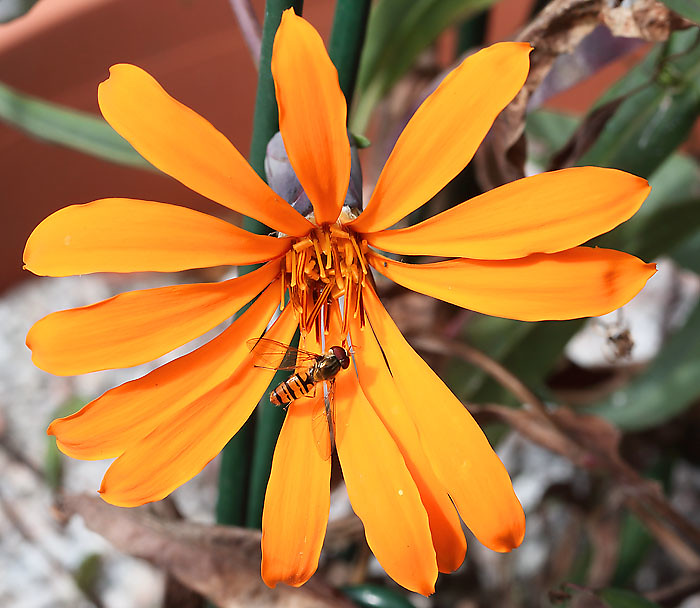I should stress that I am no expert in growing Mutisia and have also experienced the same problems that you have described with seedlings.
In July 2017 a very kind member of the forum sent me some fresh seed of M. decurrens. There were 11 seeds of which 9 looked plump. I sowed them immediately on a compost comprised mainly of crushed lava and pumice with about 20% coarse very gritty sand and 10% JI3.
7 seedlings germinated but a humid muggy autumn resulted in two dampening off whilst two more succumbed to a micro-slug commando raid. Three plants remained of which two had become heavily intertwined.
I gingerly re-potted the three plants into two pots using the same mix in very deep "palm seedling" pots. The intertwined plants were easier to re-pot and sustained absolutely no root damage -one or both romped off.
The remaining seedling was more awkward to transplant and it sulked for a while. I re-potted both the "twin" plant and the single plant again in Spring 2018 using large deep glazed earthenware pots whilst inserting support frames to help them climb. Both pots have done well with the larger of the two having flowered last year. Both have come through the Winter well and are currently looking fine.
I have tried a similar potting mix in long tom pots for a couple of seedlings of M. spinosa and again this seems to be working well.
With such a lean mix it is important to provide some additional feeding. I use a 1:0:2 feed diluted to 1/4 strength about every 2 weeks during the growing season. Iím sure I have read that many South American plants native to volcanic soils are intolerant of high phosphate feeds but I canít find the reference to this anywhere (perhaps I have this wrong).
Iím convinced that Mutisia, even as seedlings, hate any root disturbance and that they demand a free-draining very lean compost in a deep pot.



